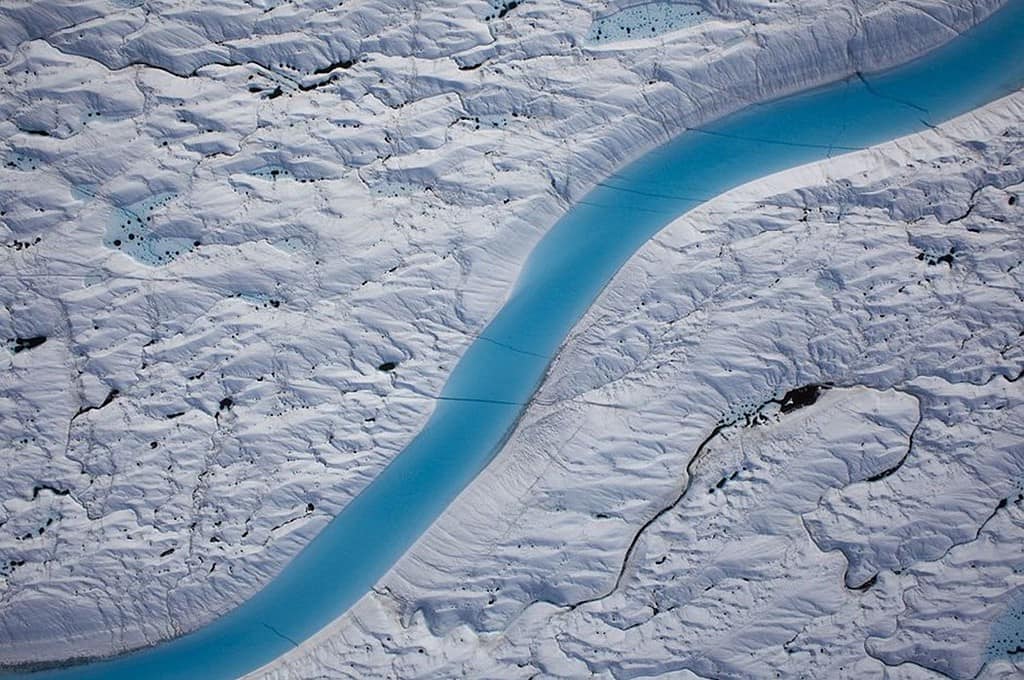
In the remote, icy expanse of northern Greenland, the onset of spring transforms the landscape into a surreal scene. Meltwater channels, born from rising temperatures, carve through the ice, creating striking, pure blue streams and lakes.
These natural phenomena are both mesmerizing and alarming, highlighting the impacts of climate change. Expeditions, like Greenpeace’s in 2009, have explored these regions, revealing the accelerating glacial melt and the urgent need for environmental action. Photographer Nick Cobbing’s documentation of this vast, otherworldly terrain underscores its majestic and fragile beauty.
“To say this landscape is vast and otherworldly doesn’t even begin to describe it,” says photographer Nick Cobbing, who documented the Greenpeace expedition. “The kayaks lent a scale to the landscape, something to grade those cracks and circles; offering a reference point for the magical detail of the blue moonscape below me. These ravines had it all: sweeping bends, majestic mountains towering one kilometre high and Petermann Glacier itself, seemingly infinite to the eye.”
These channels, increasingly forming due to global warming, not only add surreal beauty to the region but also signify the alarming rate of glacial melting.
Greenland is significantly affected by climate change, evidenced by its rapidly melting ice sheets and glaciers. This melting contributes to global sea level rise and alters local ecosystems. Warmer temperatures are causing the ice to melt faster than it can be replenished, leading to changes in the landscape and potentially impacting global weather patterns. The situation in Greenland serves as a critical indicator of the broader impacts of climate change on our planet.
The expedition also highlighted some specific mechanisms through which these rivers are formed.
Naturally occurring meltwater channels in Greenland are forming more frequently and growing larger due to increasing global temperatures. These channels, originating in glaciers, flow downwards, reaching and lubricating the underlying rock. This process speeds up glacial movement and break-up.
The continued rise in global temperatures will likely hasten the melting and eventual destruction of the Greenland icecap, presenting these stunning blue waterways as both a breathtaking and stark warning of the urgent need for environmental action.
[This article is over 10 years old and has been republished from the ZME Science archive]
